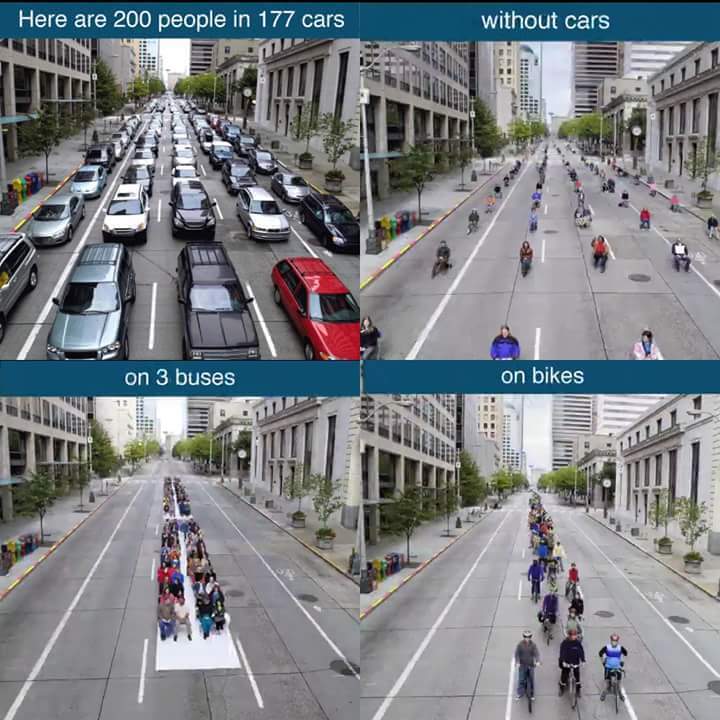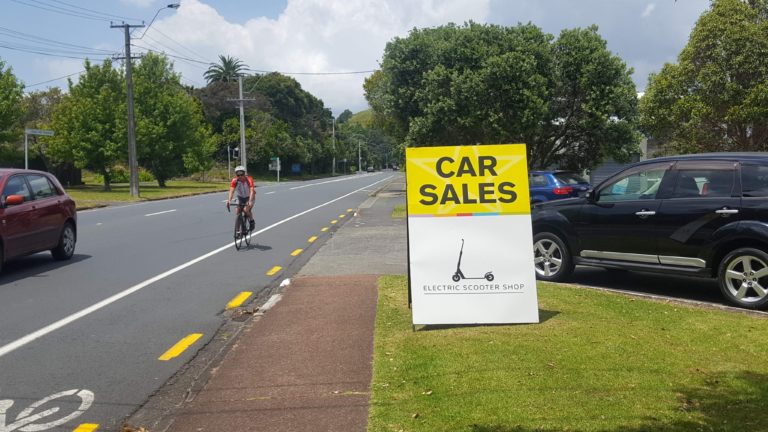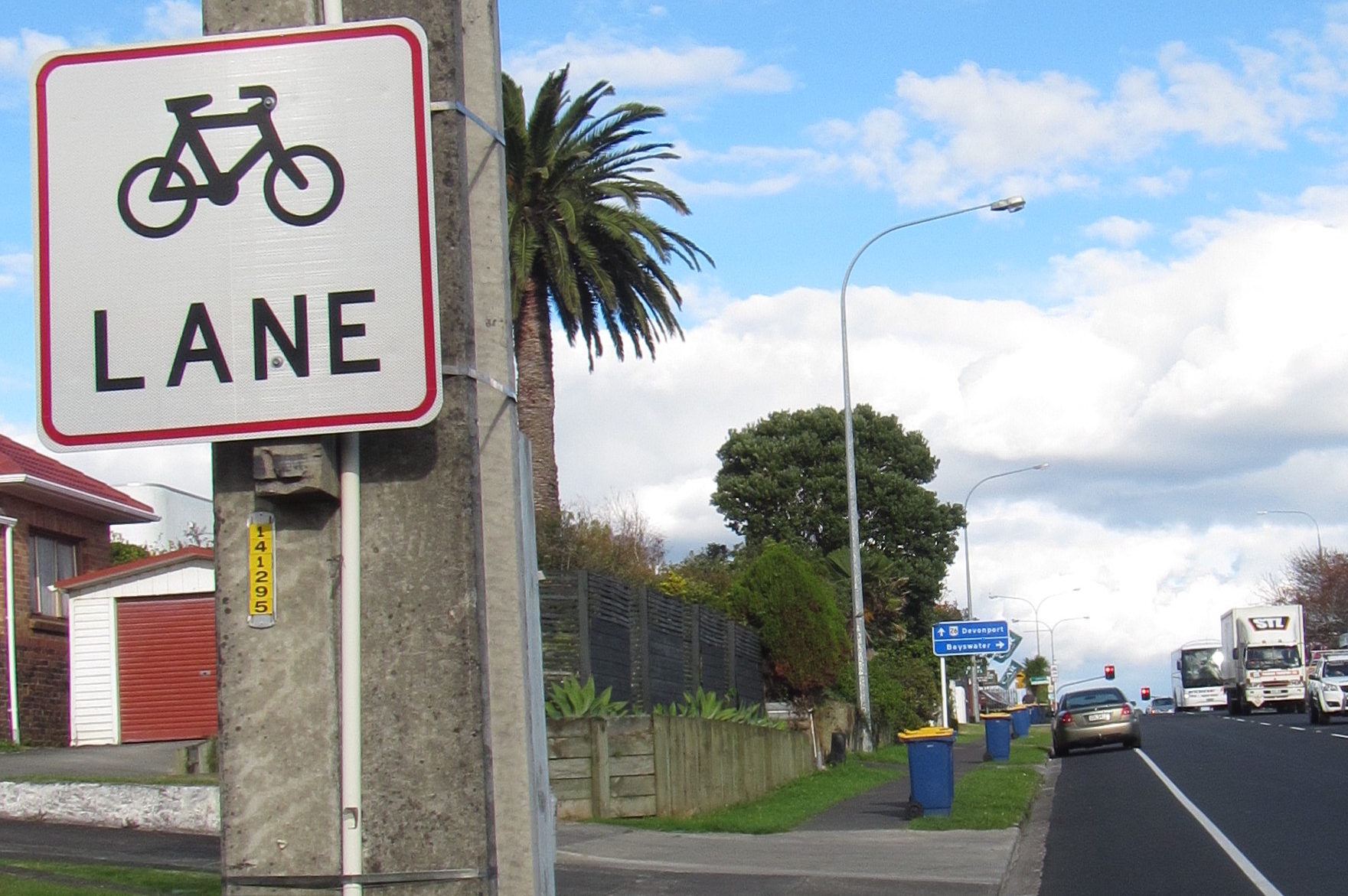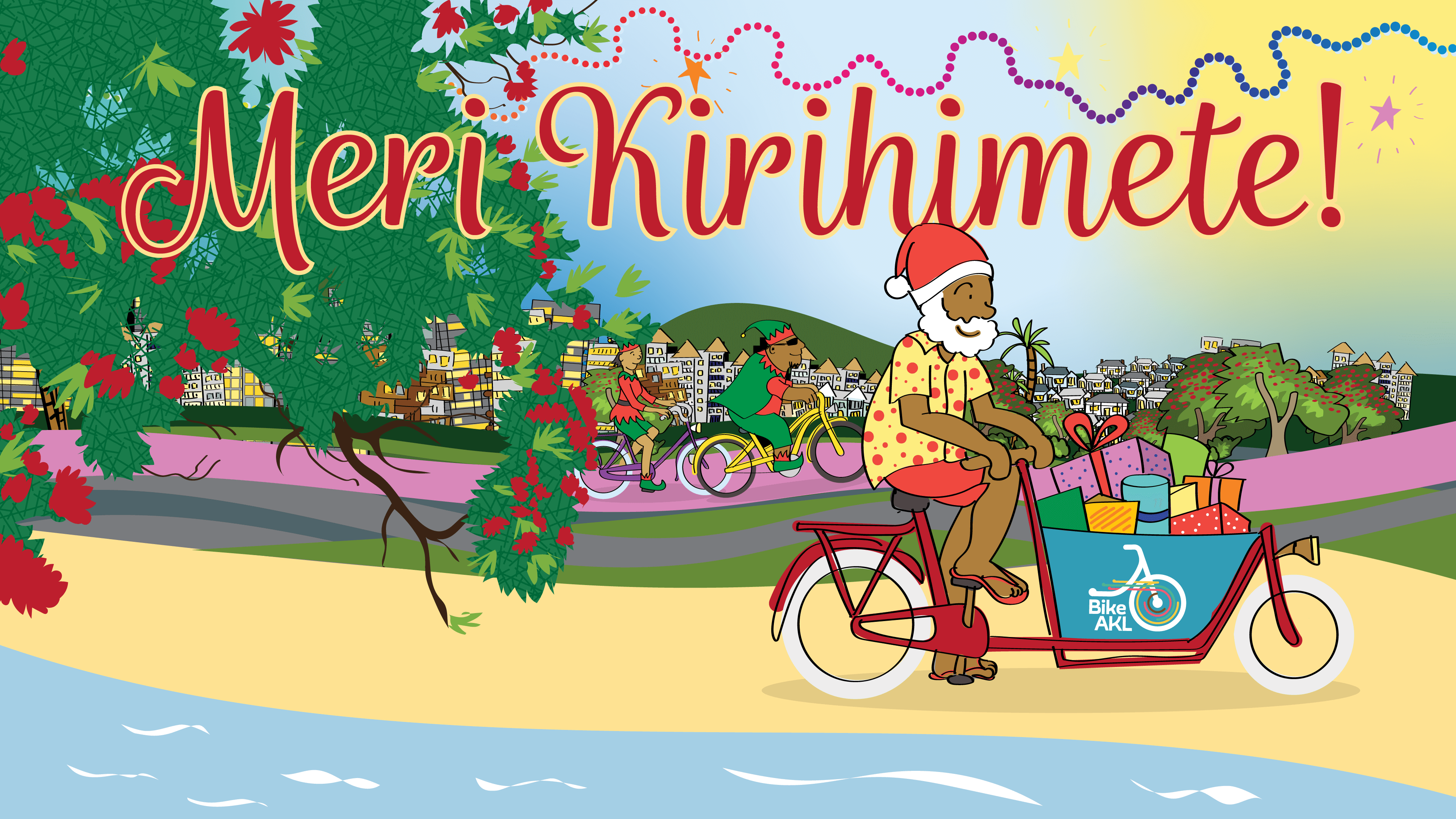In April, Auckland Transport consulted on a multi-modal design for Lake Road that had been a long time (and $2m dollars) in the making. Then, out of the blue, things took a swerve. In this guest blog post, local legend David Slack takes stock of the situation…
Misery comes in many forms. For people in Devonport it approaches them, at a crawl, from Takapuna and is called Lake Road.
It runs down a peninsula, one way in, one way out, too many vehicle trips, too little road. Almost everyone who has spent time there in a stationary vehicle has ideas about fixing it: get rid of the bike lanes; put in roundabouts; put the bike lanes somewhere else; turn the bike lanes into roundabouts; any and every traffic engineering possibility up to and including an expressway-on-sea.
Misery loves consultancy. Enter an Auckland Transport project team and engineers at BECA, who three years ago went to work on a plan. They consulted, they reported back (2017), they consulted some more, they reported back (2020). In the most recent report they methodically work through all the possibilities. The logic that carries them towards their recommendations is pretty persuasive.
They summarise the problem as:
“the unpredictability of travel conditions along Lake Road during weekday peak times and during the weekends.”
The essence of their solution is:
“Around half of all Lake Road journeys are short trips that stay within the peninsula. We want to help people making those short trips to have good alternatives to driving. This will help free up Lake Road for people making longer trips by car or who need to drive.”
They set it all out in very comprehensive detail. They provided a plan. It sits ready today to proceed to detailed design. In slightly more detail, it proposes:
“A mix of improvements aiming to improve travel choices and road safety that avoid acquiring property or extensive and disruptive construction works.”
and:
“Making people using Lake Road and Belmont safer, regardless of their mode of travel.”
That means, in particular:
- physically protected bike lanes designed for all ages, from school kids to gold card e-bikers; safer pedestrian crossings and safer intersections.
- new T2 transit lanes targeting the most congested parts of Esmonde Road and Lake Road
There is a maxim that’s apt here: if you design a city for cars, it fails for everyone, including drivers. If you design a multi-modal city, it works better for everyone, including drivers.
Yes, for many users of Lake Road the car is the only real choice. But given that around half of all Lake Road journeys are short trips within the peninsula, many of those might very possibly be done by bike, by foot, by bus. This plan makes that much more possible by making it safer for bikes; by encouraging ride sharing; by giving buses some priority, by ensuring that if you have an alternative you might be more inclined to use it. All of this would make more room for the drivers with less choice.

No, the design isn’t necessarily perfect. At least to keen Bike Auckland eyes, it doesn’t quite join the dots. Transport planning 101 suggests you ensure you deliver people to their destinations. This one peters out at both ends, leaving no safe bike connection through to the Takapuna shops, somewhat akin to stopping the ferries a few 100m off the wharf and asking people to swim the rest of the way.
But the essential idea of the proposal is still most surely on the money. People need alternatives to getting stuck in traffic. This proposal holds out that possibility.
So would a local board, offered the chance to improve a benighted road, and offered some $47 million in funding say “you bet?” or “yes please can you start tonight”? Actually, no. When the time came for a vote on the plan, four of the six local board members voted no. Their objection was essentially that it wouldn’t “fix” Lake Road. They seemed to be looking for some solution that would magic away all and any queued vehicles.
You can hope that there might be a way to expand the capacity of the road so that all the vehicles can come and go at will, but this would be asking traffic engineering to contradict an almost immutable law.
1970: One more lane will fix it.
1980: One more lane will fix it.
1990: One more lane will fix it.
2000: One more lane will fix it.
2010: One more lane will fix it.
2020: ?pic.twitter.com/NjS1IPORG2
via @avelezig— XXI Century City (@urbanthoughts11) November 4, 2019
Let’s turn back for a moment to the engineers who looked at this at length, consulted at length, ran the numbers, tried the options. What they say is: there’s just no possible way to do what people seem to fondly imagine possible. You might buy houses to widen the road, but the endless truth of road building is that traffic expands to fill the available space.
The best way to handle volume growth is to encourage people into other, better, more efficient modes of transport, getting people into other use through safer cycle lanes, transit lanes and footpaths.

For that 47 million in funding you might not fix the problem entirely but you could likely make things quite a lot better. And yet four out of six local board members appear to prefer all of nothing to half of something. Perhaps they imagine another chance and a better outcome. With so much of council spending now up in the air, that seems a heroic call. It leaves the campaigning banner of “more for the shore” looking somewhat flaccid on the flagpole.
So what now? What happens to the $2m worth of design ready to go to detailed design and implementation? Is it now dead, or at least floating feet-up, in the water? AT would be unlikely to take it forward if the Local Board is not on board.
Might the Local Board revisit their decision? Might they pause, reflect, give more thought to the longer view, to the large changes happening in transport, the climate crisis carrying us toward a carbon free future, the surge in bike numbers – particularly e-bikes?

Lockdown saw many people embracing the idea of a calmer, more agreeable world with more walking, more biking, a more tranquil balance. Why would we not want to encourage that kind of low-carbon improvement?
What seems to be happening here is the perfect getting in the way of the good, with board members enchanted by the dream of a magic solution. As it happens Don Henley has written a song for just such a scenario. It’s about little green men landing on planet earth, but the sentiments are also absolutely on the money for the fantasy of wand-waving Lake Road car liberators.
They’re not here, they’re not coming
Not in a million years
You may see the heavens flashing
You may hear the cosmos humming
But I promise you, my brother
They’re not here, they’re not coming
— David Slack






